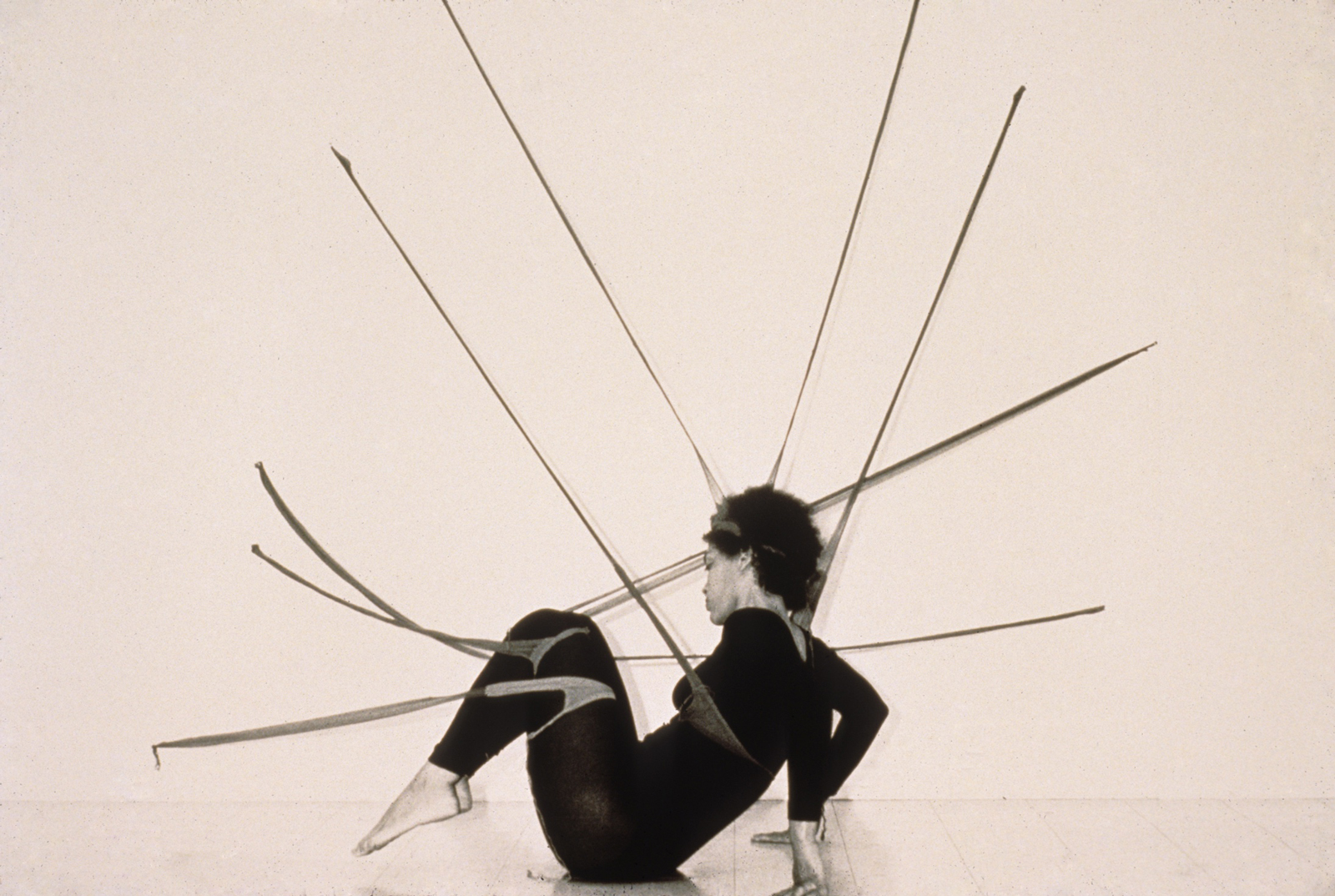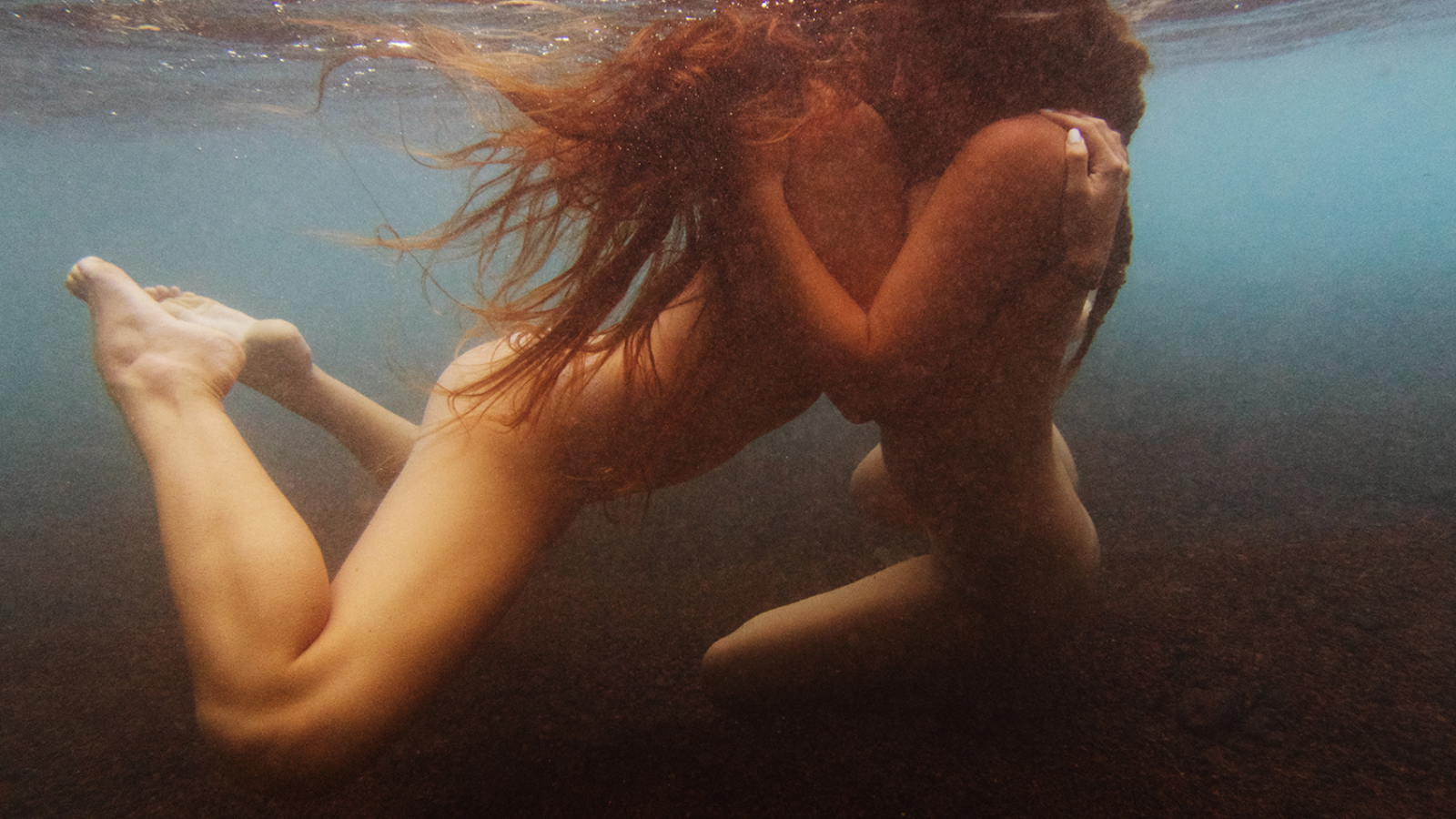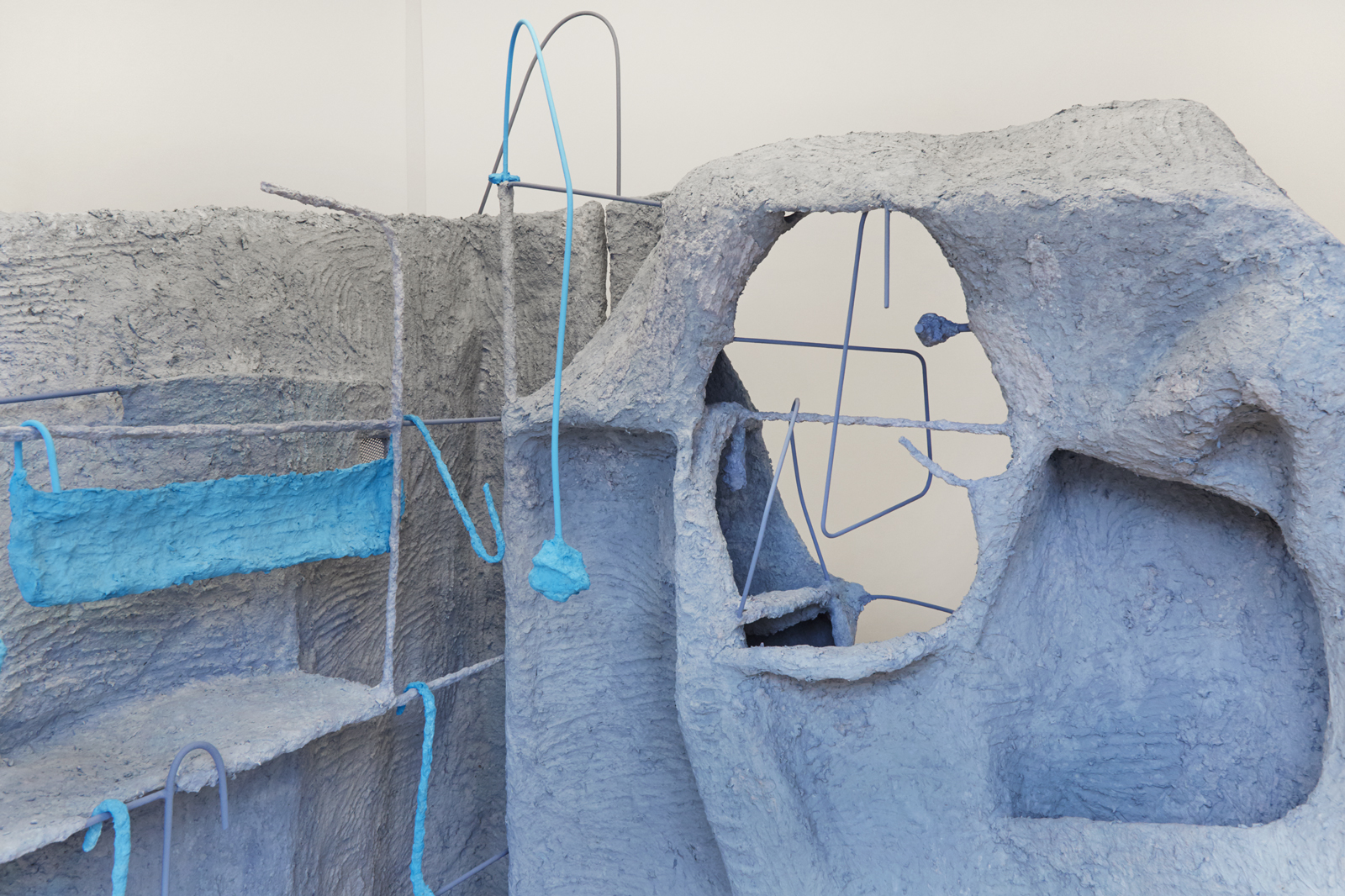Text: Karisa Senavitis
All Images Courtesy of the Artist and Susan Inglett Gallery
For a significant span of Maren Hassinger’s life, her work was very deliberately and thoughtfully about a loss of nature. “I wanted my work to be an overarching statement about nature in our lives now. Our relationship to nature is going to be different than other generations’ relationship to nature because we have damaged so much.” Over the past few years this concern has morphed into ideas of equality. Hassinger discussed this with Lowery Stokes Sims for BOMB. “I see the loss of nature as intimately connected to people who have created social situations and monetary gains, based on killing nature. Only recently, I got really interested in how the rape of nature and discrimination against certain individuals, certain human beings, are related.”
I think of Hassinger’s art-making as motions of care for the earth and each other. Unraveling heavy industrial wires into her sculptures Rain (1974), Walking (1978), Twelve Trees (1978), and Leaning (1980), their frayed edges seem to release energy. The untwisted ends represent acts familiar within a cycle of maintenance and repair – when broken things and detritus are taken apart, recycled, or recomposed for spiritual or practical use. Hassinger is undoing or decomposing the power of industrial materials by hand while recognizing them as a natural form. The wires have this twist Hassinger says “that twisting thing has to be central to all mammals / it’s our innate knowledge about our body.”
I’m untwisting my conversation with Maren Hassinger as she might unravel a steal cable wire. After going back through tangents and tangles, I have picked out certain threads in her life story that wound through our phone call. Three places reoccur: Los Angeles, New York and Baltimore. Here I isolate each place she has called home and how it might have shaped her life’s practice. In Hassinger’s words, “use of space in sculpture can define our relationships to one another.” Perhaps place will serve us similarly.
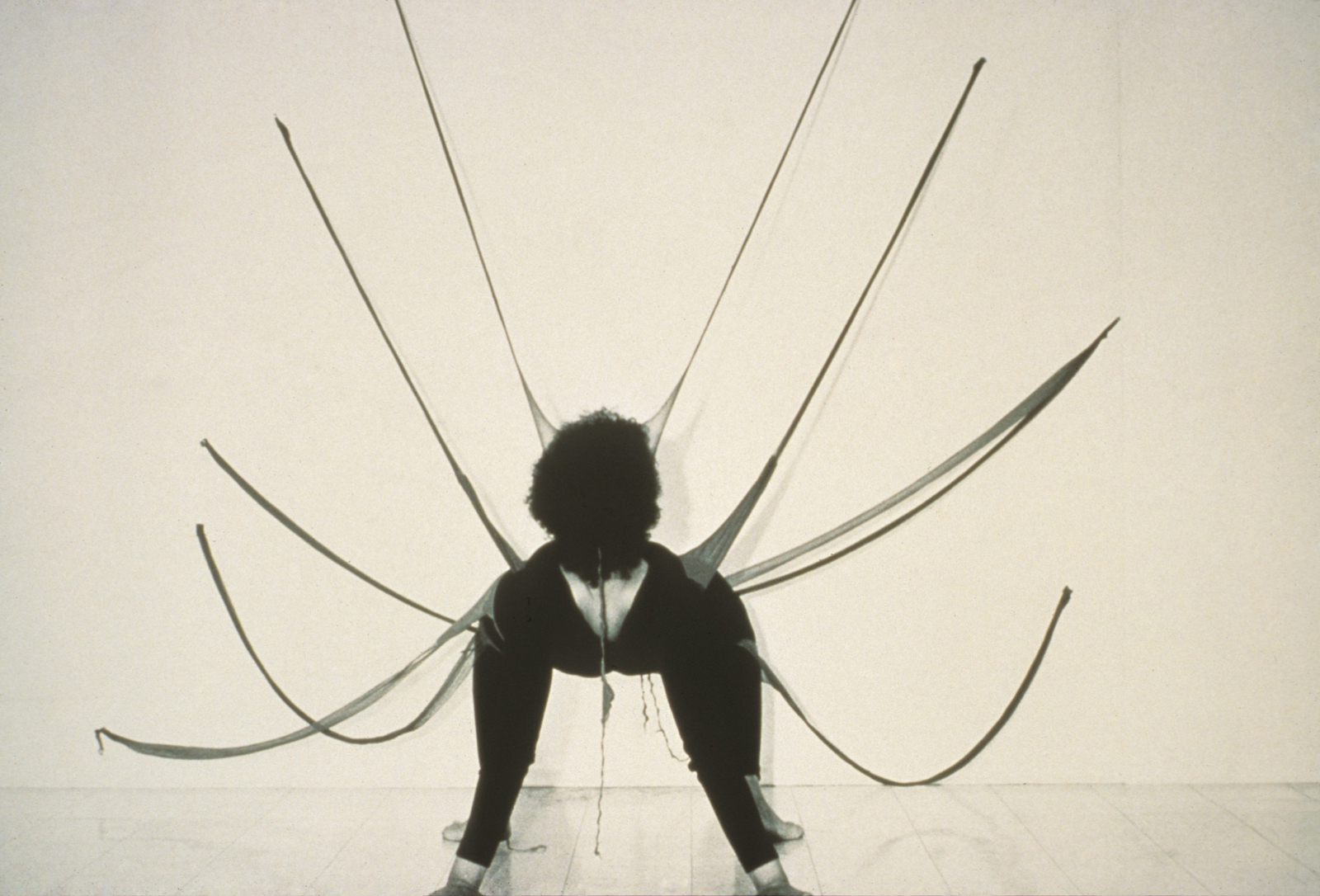
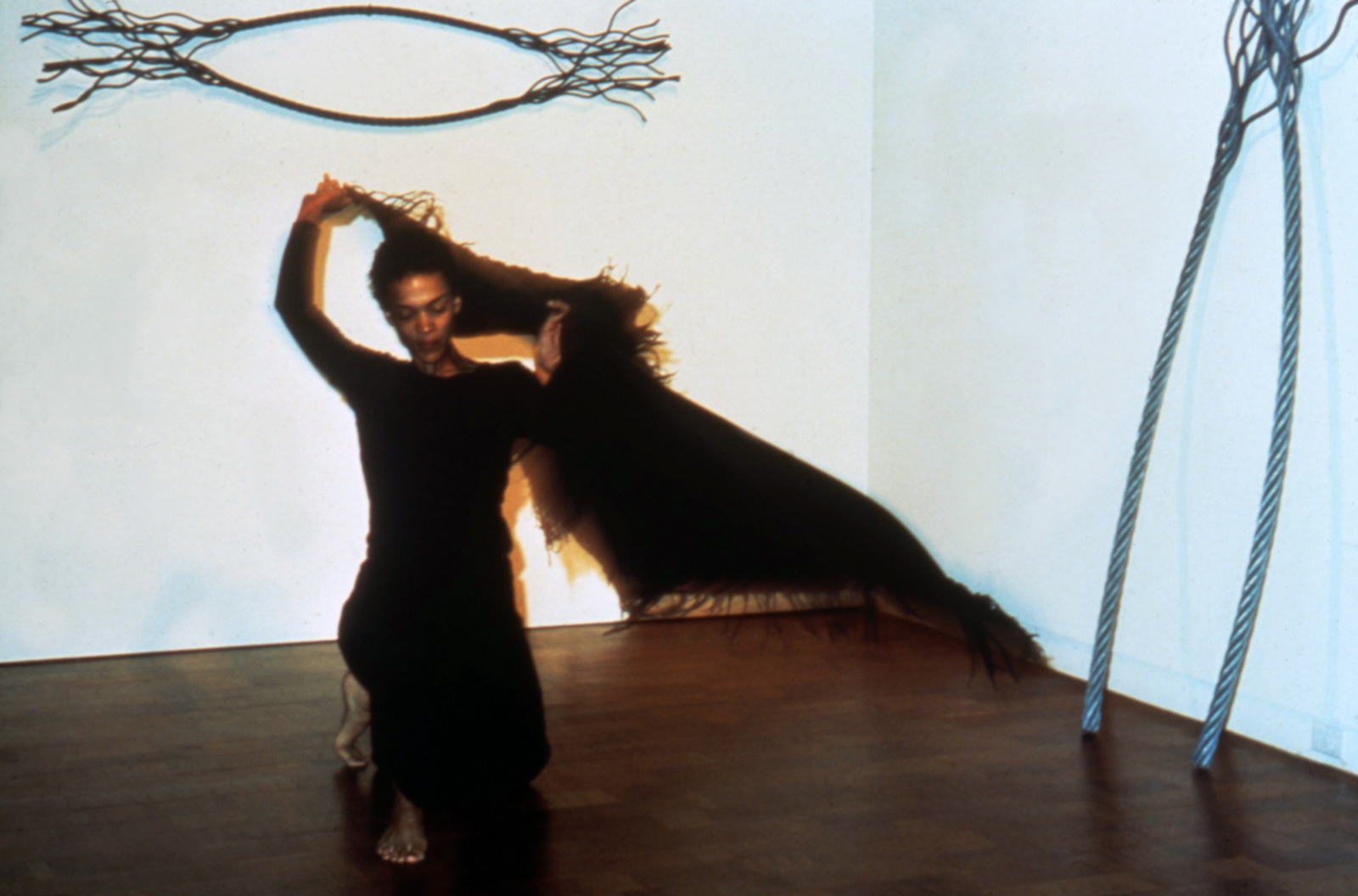
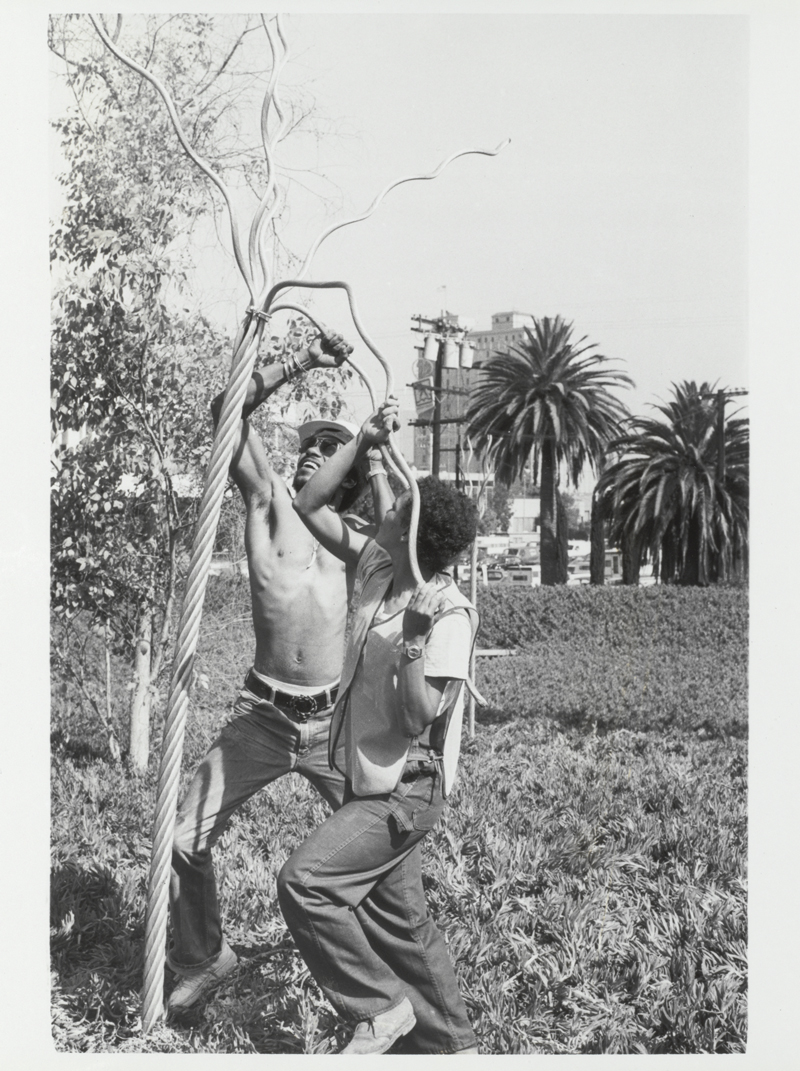
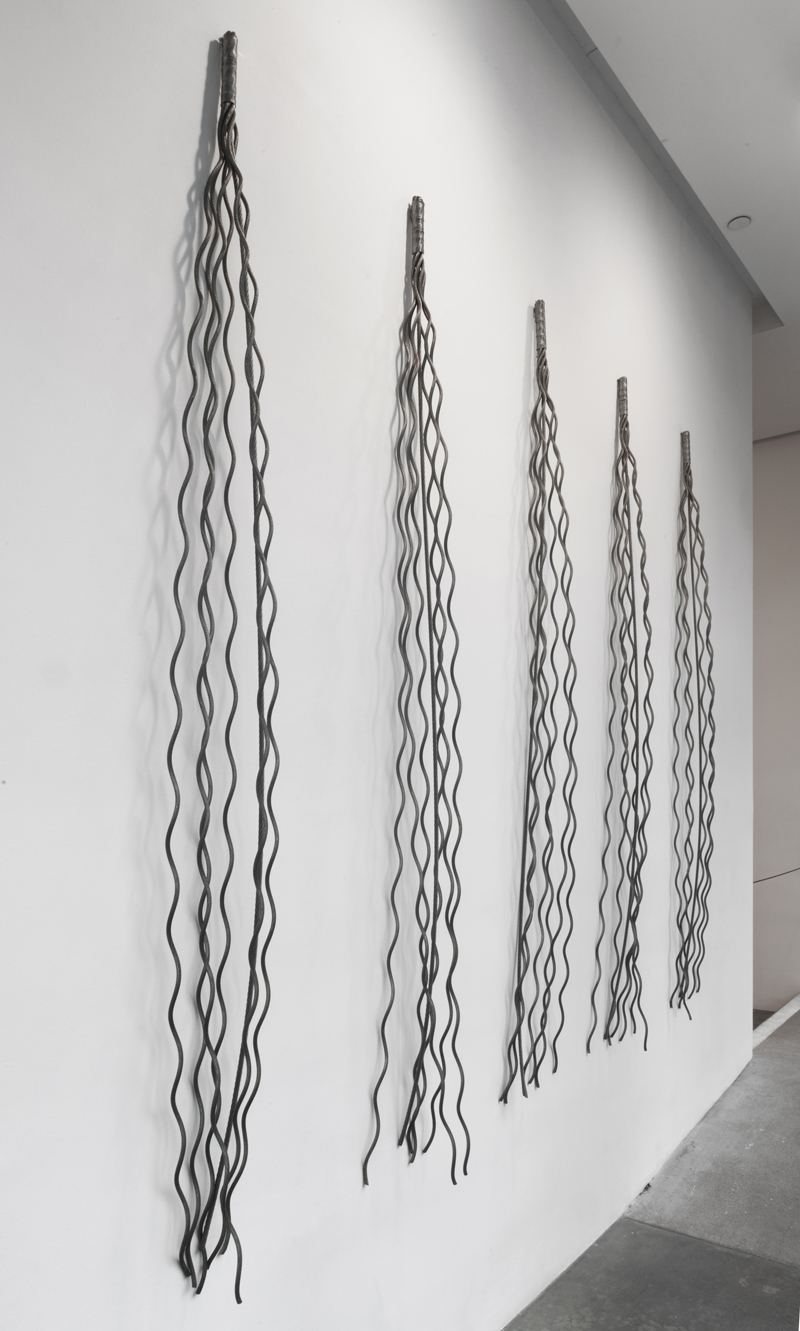
Baltimore
Our conversation starts not too far from Baltimore, on the occasion of a newly commissioned work, Pink Light (2018). The installation is planned for a one-night festival in Symphony Woods (Columbia, MD). “The woods aren’t that big. I mean they’re not like the ones that Hansel and Gretel got lost in.” After her site visit, Hassinger has developed designs for a fabric canopy that will project light toward the ground from about 12-feet in the air, supported by the column-like trunks of 50-foot pines. “It’s going to come down like the sunshine above your head,” says Hassinger. She met with curator, Caroline Maxwell, and lighting technician, Ayumu Poe Saegusa, to approve the color of the light and choose a scrim material. “We all put out our hands and let the light go over our hands and forearms. Poe was the one who said, ‘oh, look! Brown, black and white, all these are pink.’ I mean that’s like a miracle. Literally you are lit and then you are enlightened.”
Hassinger directed the Rinehart School of Sculpture at the Maryland Institute College of Art (MICA) from 1997 to 2018. For 15 of those years she also lived in Baltimore and found it hard to get a foothold as an artist. “There’s been this classic racial division and it never ceases.” The divisiveness of Baltimore came up when we started talking about George Ciscle, the curator in residence at MICA , perhaps best known for Mining the Museum with Fred Wilson. “Oh my God, I love him,” blurts Hassinger, “George has been one of my inspirations and I think the curatorial projects with his students are incredibly humanistic and visionary. So it’s a troubled place and George is there— he understands the place entirely and he is always involved in trying to bring people together. It’s just touching, touching, nothing else you can say about it. He is absolutely committed to his idea about unity.” I suggest that unity is a commitment Ciscle and Hassinger share across differences. Hassinger elaborates, saying they have different life experiences but are both sensitive to difference and what it means to live in a different way. “I think otherness helps in understanding the divisions that people have and appreciating those divisions and seeing that they’re hopelessly stupid.”
The Baltimore Museum of Art is currently showing Hassinger’s solo exhibition The Spirit of Things at a time when it’s reckoning with such discrimination and divisions. I had heard from artist Emilio Martinez Poppe that the BMA was divesting some of its collection in order to invest in the local community. Hassinger responds, “That’s not a rumor. And it’s changing the face of things. I always thought that their contemporary collection was limited. Chris Bedford stepped in as the new director and deaccessioned some of the contemporary collection. And the money went to bring the community together, opening the door, and it really worked. I will send you a photograph that a colleague from MICA, Hugh Pocock, sent me of my show where all of these ladies in the community are posed in front of my pink bag piece Love.” For Love (2014 – 2018), Hassinger uses human breadth and scoops of ambient air to inflate bright pink plastic bags with love notes inside. The bags occupy gallery walls and become the backdrop of the photo. “It was one of their birthdays and they are all dressed up in pink. It’s a fabulous, fabulous document of how that museum is changing at the hands of Chris. I mean it brings tears to your eyes. It’s amazing. Amazing.”
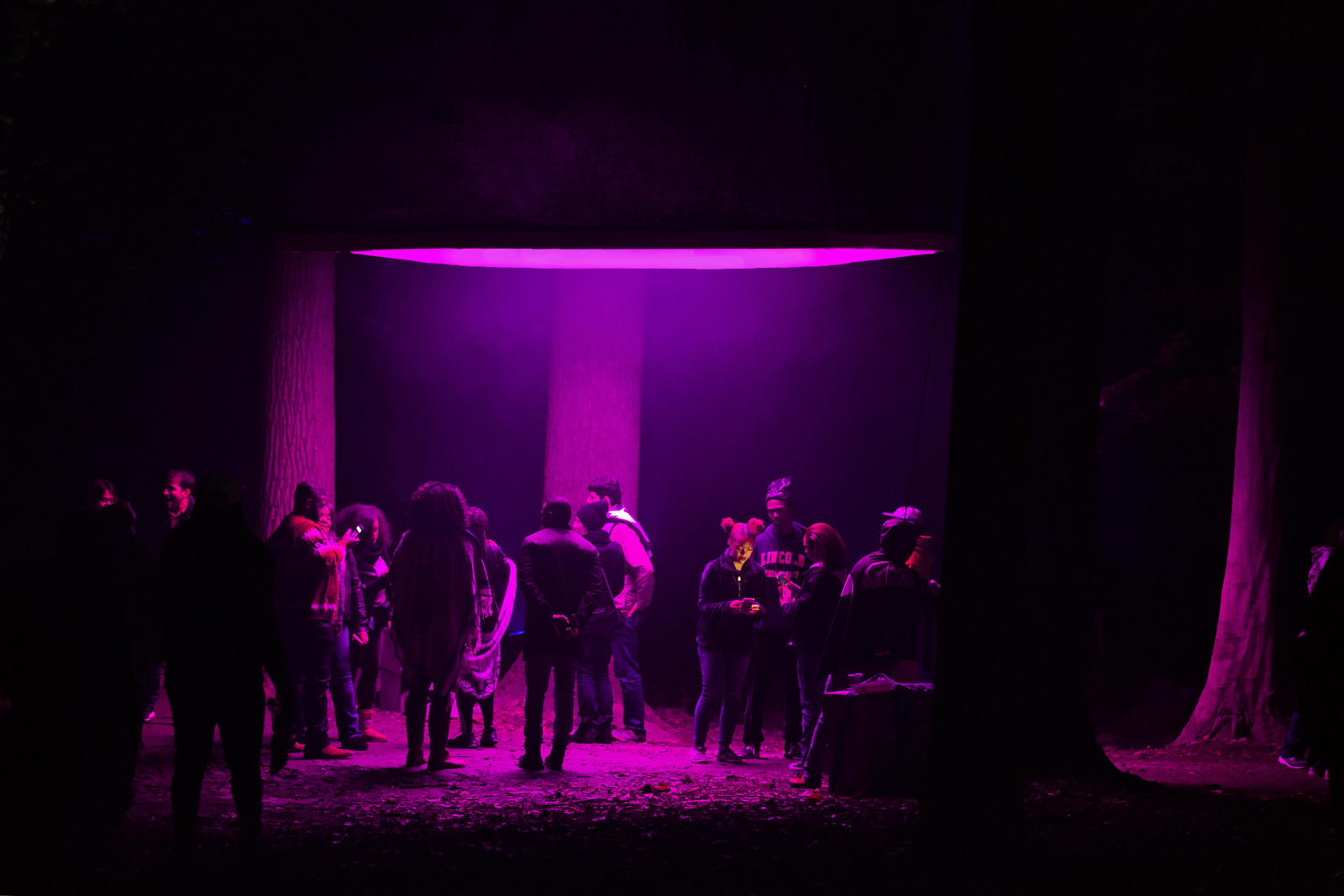
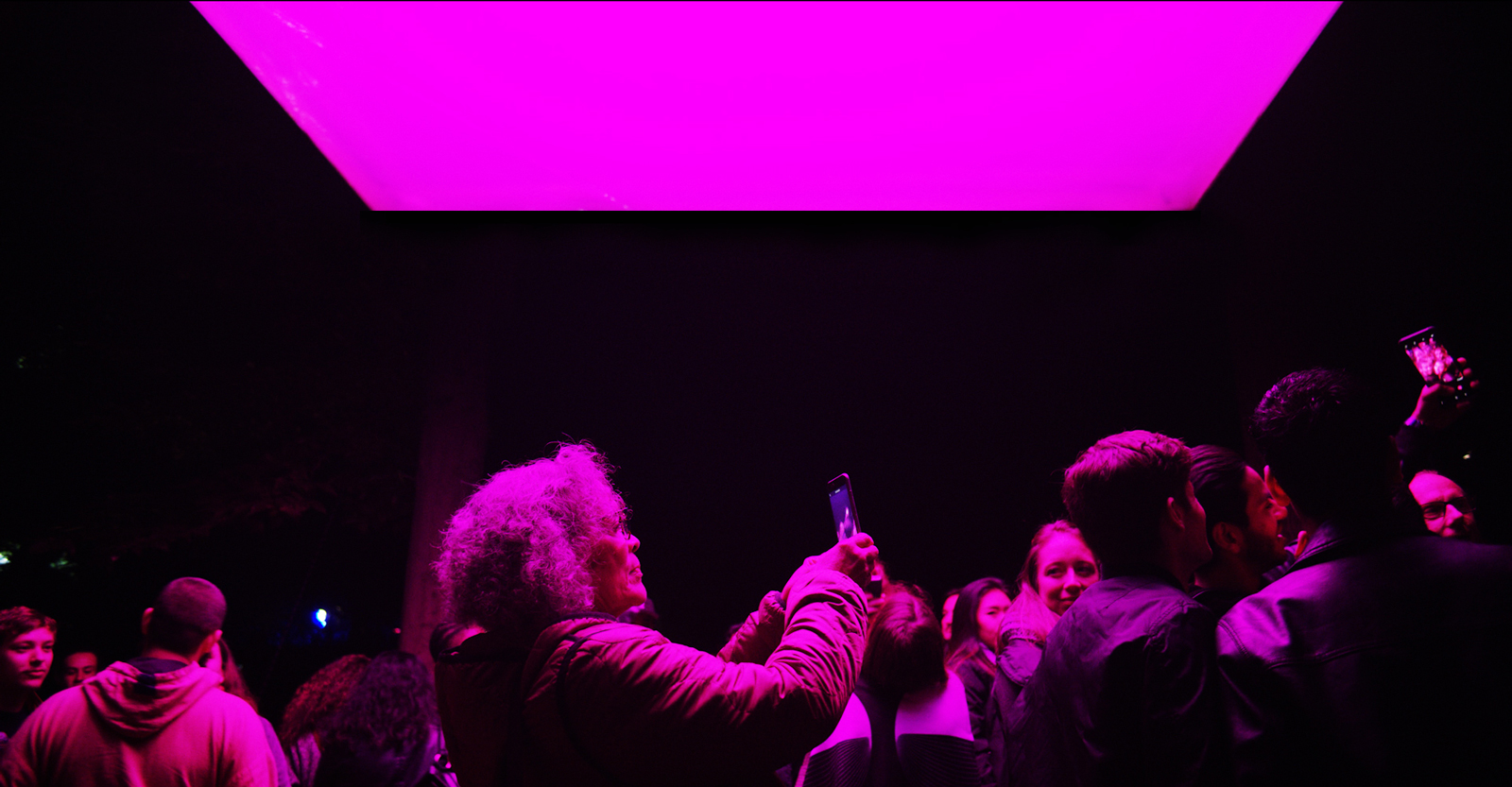
New York City
Affectionately recognizing the efforts of her colleagues rather than elaborating on her own work Hassinger says “I don’t like braggarts.” We talk about various art scenes and she warns economically disadvantaged people, people of color, women, and the LGBTQ community to avoid the art market and market driven work, but concedes it is a necessary evil for artists to survive. One could say Hassinger has had a strained relationship with museums and the hierarchies of the art world. “I was not noticed for a long time,” is how Hassinger puts it. “I spent about 50 years making art professionally and the market never embraced me until really a couple of years ago.” After returning to New York when her children had grown, Hassinger has representation for the first time. Her dealer, Susan Inglett has a Chelsea gallery of substance and the support has been amazing. For instance, a recent acquisition by MoMA has allowed Hassinger to lease a 1,700 square-foot studio four blocks from her house in Harlem. The space will allow for her to explore new ideas and ways of working. “I can incorporate more materials.”
Hassinger has a deft skill at conferring an aura or substantial physical presence to small, common elements. Her current project for the Studio Museum in Harlem, Monuments (2018-2019), places large geometric and organic forms in dialogue with the configurations and activities around Marcus Garvey Park. Working with community volunteers, Hassinger’s sculptures are constructed from bundles of branches gathered from the park trees. Hassinger says, “I made the pieces site specific to their environment —thinking of the spaces around us as continuous and adaptive and protective.”
City parks have also been sites for her to perform. For ‘Art Across the Park,’ she was calling attention to trash in the environment by making it the opposite color of the green grass it littered. Hassinger gathered existing trash from three parks, depositing it in the proper trash recepticals. Then, reaching into her pink bag she distributed pink objects throughout the park while dressed in pink. In the original performance the pink objects were removed from Central Park in less than a day, a reaction that pleased Hassinger. Pink Trash (1982) was recently restaged as part of the Brooklyn Museum of Art’s exhibition We Wanted a Revolution: Black Radical Women 1965–85, but there was far less trash to gather from Prospect Park this time. Only one organic plum was found.
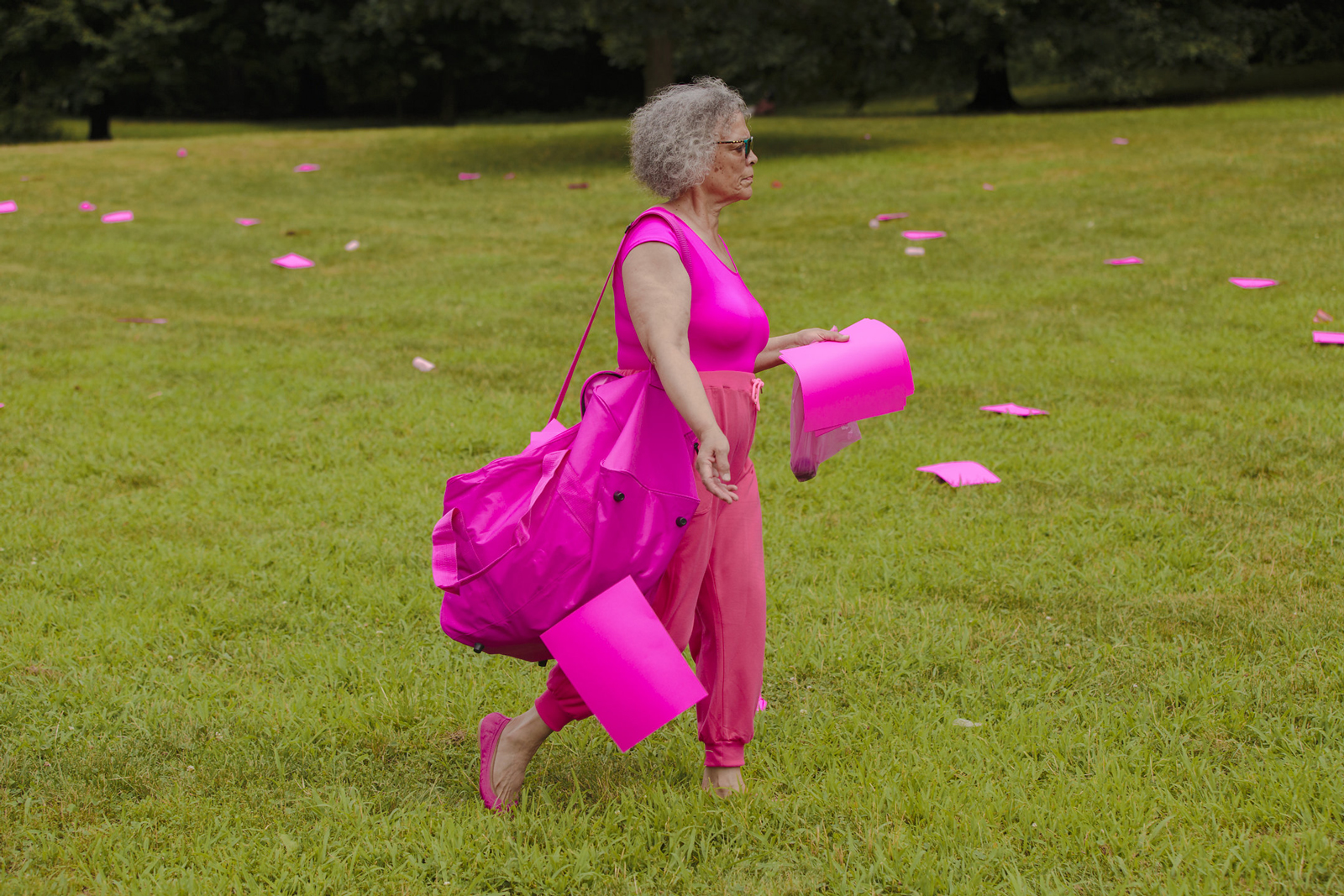
Los Angeles
Hassinger grew up in a fairly idyllic, integrated middle class neighborhood in Los Angeles She was passionate about dance but her father, an architect, actively discouraged her interest in the arts. Hassinger’s video work Birthright (2005) traces her father’s lineage into unresolved family trauma. Elsewhere she has described that process as finding understanding and healing. Undeterred from her artistic pursuits neither by her father’s disapproval, nor dance departments that rejected her, Hassinger moved into sculpture at Bennington College and, for her masters at UCLA, a foray into fiber structure. Back in Los Angeles she continued to study dance and build her repertoire as an artist.
“I started using pink when I lived in Los Angeles in the late seventies and early eighties. I did this piece with a group from CalArts. I painted some paths in an abandoned neighborhood. The neighborhood had been demolished for a freeway and then they never got around to making that freeway in Lynwood. The place was overrun by packs of wild dogs. It was a really sad, dilapidated former neighborhood, and I painted some pink paths to cheer it up. One led to a house; many were just the kind of pathways that you’d see between major streets. When I painted these pathways I noticed the grass next to them. The grass was really green and the pink was really pink and I thought, Oh my God, this is a color project. This is color theory at work right here. Amazing.”
It was also during this time Hassinger began performing with artist Senga Nengudi in alternative happenings like Freeway Fets (1978)—that have received recent recognition in Kellie Jones’ book South of Pico. “We’re very close friends then and now. It was like filmmaking. Senga was the director and I was the actor.” Last year, Art & Practice (A&P) and the BMA scheduled back-to-back solo exhibitions of Hassinger and Negundi in both locations. Hassinger spoke well of the experience with Mark Bradford, founder of A&P, who has ideas about how to use “the immense amount of money that’s floating around in the art world to do something beneficial, to give the money some positive use.” The Leimert Park community, where A&P is located, has an incredibly high rate of foster youth. “So part of Art & Practice is community outreach. The people who helped me put up my show, some of them were foster youth who are interested in art. It was a way of them seeing what it’s like to be an artist. It was an education.”
Speaking of artists that inspired Hassinger in her own development, she names Agnes Martin whose “paintings are made to save her life I think. They were kind of a balm for her existence.” Reflecting on her encounters with Martin, Hassinger recalls, “she had done this talk at the Los Angeles County Museum of Art where she had a chair that was sitting center stage and she walked up and sat down on it. She had a hanky in her hand and she was twisting the hanky. Then she went on and she talked for an hour with no notes, no break, no banter. She just talked. And it was like listening to her painting. It was the same quiet, thoughtful, mesmerizing experience. It was like being alone with one of her paintings, but it was a full auditorium spell bound. Spell binding.”
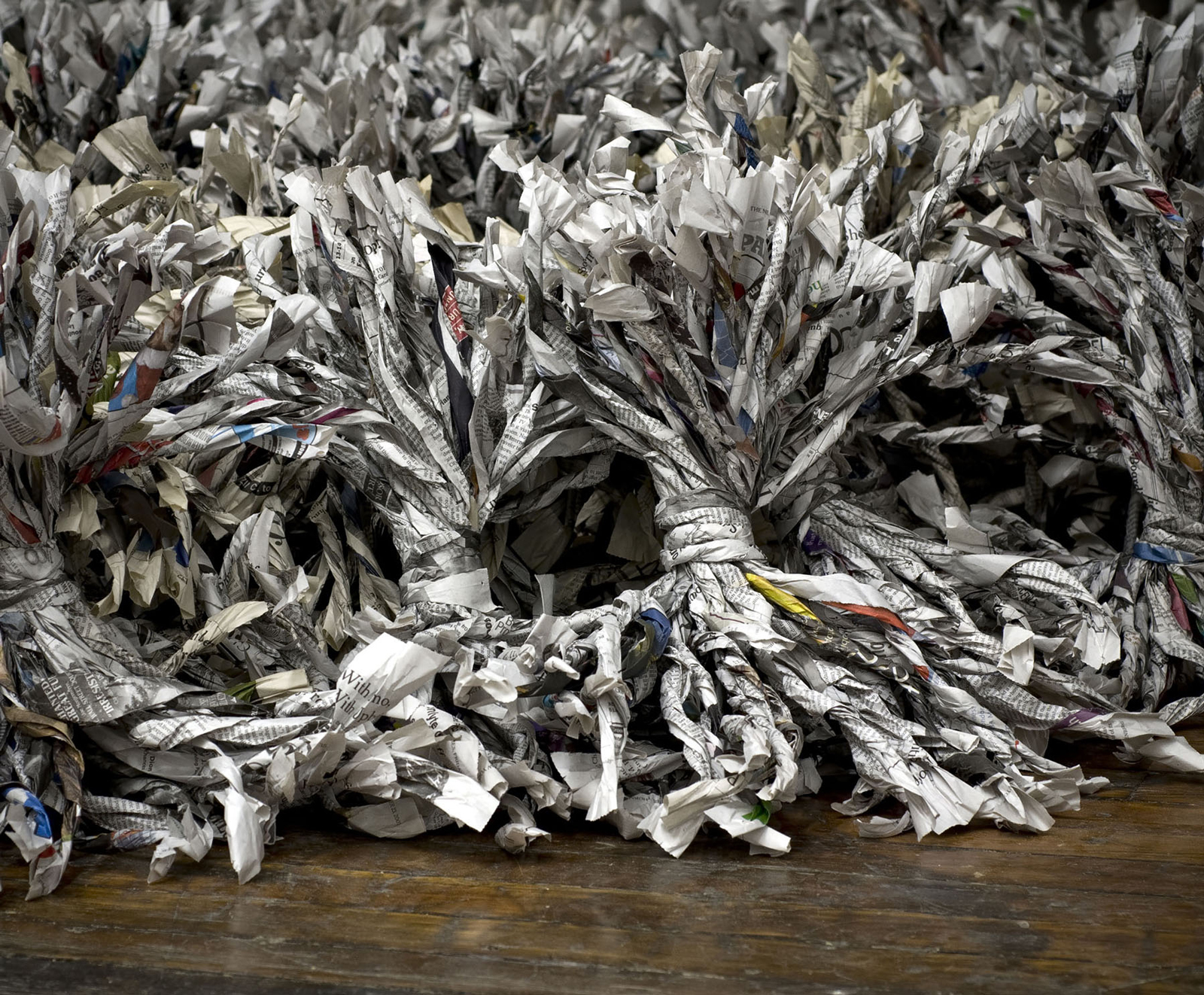
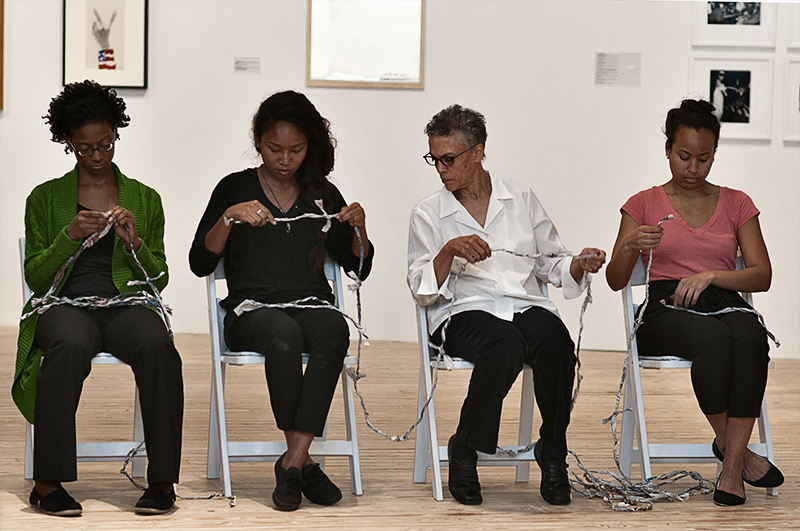
Twist
The twisting of the hankie recalls Hassinger’s twisting sculptures. “It’s probably based on that memory but also based on me seeing my daughter’s umbilical cord. It’s kind of grayish and it’s in this exacting twist.” Hassinger remembers when she had just gone through labor she was comparing the shape of her daughter Ava’s umbilical cord to galvanized steel wire rope she used in her sculpture. “I definitely thought at the time, ‘oh my God, I’m on the right track.’” For Hassinger, the twisting was an embodied knowledge common to all mammals as a shape “that’s nurturing, life-giving, something we share as a memory of life.”
Maren Hassinger and Ava Hassinger have collaborated as Matriarch in film, video and performance. Daughter Ava has also found the umbilical cord a potent form and symbol in her own artwork. Recently Ava made an analogy between the life support of umbilical cords and the wires that tether us to our digital devices. In one piece, wires coming down from the wall connect to cell phones displaying photos of belly buttons (including her mother’s). While Ava is the one working with digital devices both she and her mother are interested in technologies of information. Maren Hassinger’s material is newspaper.
Hassinger uses The New York Times “because it’s writings about us. It’s photographs of us. It’s humanity, worldwide, all of our stories.” Twisting hundreds of strips of newspapers, in works such as Wrenching News (2008), Anklet (2006), and The Veil Between Us (2007/2018) Hassinger’s building meaning and form from repetitive material manipulation. Hassinger is preparing for a performance of Women’s Work (2013-2018) at Rutgers and laughs as she says, “which now we’re saying is inspired by Agnes Martin and my daughter’s umbilical chord.” For this performance: seated people will tear pages of newspaper into strips, which they will then twist into chords that will be tied together and wound into a kind of sphere. Anyone can participate regardless of gender identity, what’s important is collaboration. “The lack of division between audience and artist. That’s really important. And so that’s why I do things like Women’s Work that extend the performance into the audience. Because, as Native Americans say at the end of powwows ‘we are all related’ and we are. And so I try to make the performances say that.” In this motion, her careful twists are unifying and mending.
The Spirit of Things at the Baltimore Museum of Art closes Nov. 25th
Monuments for Studio Museum is at Marcus Garvey Park until June 10th
